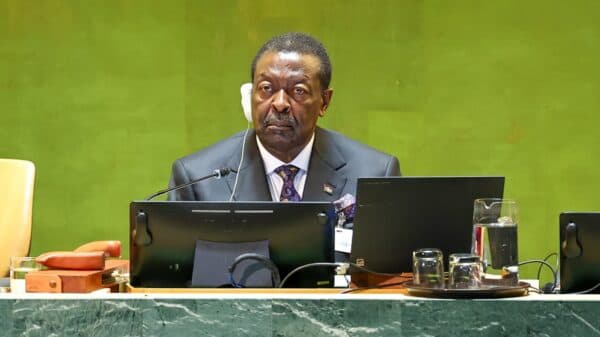We're loading the full news article for you. This includes the article content, images, author information, and related articles.
Interior Cabinet Secretary Kipchumba Murkomen has disclosed plans to arm chiefs and sub-chiefs in Kenya’s frontier and conflict-prone regions as a protective measure against threats from banditry, terrorism and inter-clan violence.

Nairobi, Kenya — September 24, 2025, 17:05 EAT
Interior Cabinet Secretary Kipchumba Murkomen has disclosed plans to arm chiefs and sub-chiefs in Kenya’s frontier and conflict-prone regions as a protective measure against threats from banditry, terrorism and inter-clan violence. The initiative will proceed through vetting, training, and licensing protocols.
Addressing security concerns at a forum in Mandera County, Murkomen committed that chiefs and assistant chiefs in volatile zones will be equipped with firearms before December 2025, once training and assessments are completed.
He said that some chiefs in Kerio Valley have already been licensed to carry arms to defend themselves from recurring bandit attacks.
The CS emphasised that the process would not be indiscriminate or publicised: the issuance of guns to chiefs is to remain confidential, with security agencies handling allocations.
Murkomen argued that chiefs and sub-chiefs in border and unrest hotspots currently face high personal risk, and thus need protection under official sanction.
Over the past years, many local administrators, especially in North Eastern, coastal and border counties, have been targeted in kidnappings, terror attacks, and raids—prompting calls for better protection.
The plan to arm chiefs follows repeated appeals by these grassroots officers during security forums, who argued that they are vulnerable and often operating in insecure terrain.
Nationally, the move is part of a broader push to strengthen internal security partnerships, including equipping and incentivising more National Police Reservists in volatile counties.
Licensing & oversight: Any armament must follow Kenya’s firearm regulations, including applications through the Firearms Licensing Board, background checks, training, and accountability structures.
Scope & limitations: The scheme is intended for high-risk areas, not blanket across all chiefs; only those who satisfy security criteria will qualify.
Coordinated implementation: Murkomen has instructed Inspector General Douglas Kanja to collaborate with regional and county security units to identify qualifying chiefs and manage deployment.
Potential misuse: The presence of more armed non-police officials could raise risks of misuse, inter-community tension, or escalation in localized violence if not properly regulated.
Tensions with communities: Some residents or local authorities may resist or question the legitimacy of chiefs bearing arms.
Accountability challenges: Ensuring transparency in who is armed, how firearms are used, and preventing diversion into illegal channels will be critical.
Precedent effects: If successful, the scheme may set expectations in other insecure areas, increasing pressure for further extension or similar measures elsewhere.
The exact number of chiefs/sub-chiefs slated to receive arms.
Detailed criteria for selection (e.g. threat assessment, district ranking).
What training curriculum and follow-up monitoring arrangements will be in place.
The budgetary costs and supply chain for the firearms and associated equipment.
How communities in the affected areas are reacting or will respond.
Keep the conversation in one place—threads here stay linked to the story and in the forums.
Other hot threads
E-sports and Gaming Community in Kenya
Active 7 months ago
Popular Recreational Activities Across Counties
Active 7 months ago
The Role of Technology in Modern Agriculture (AgriTech)
Active 7 months ago
Investing in Youth Sports Development Programs
Active 7 months ago